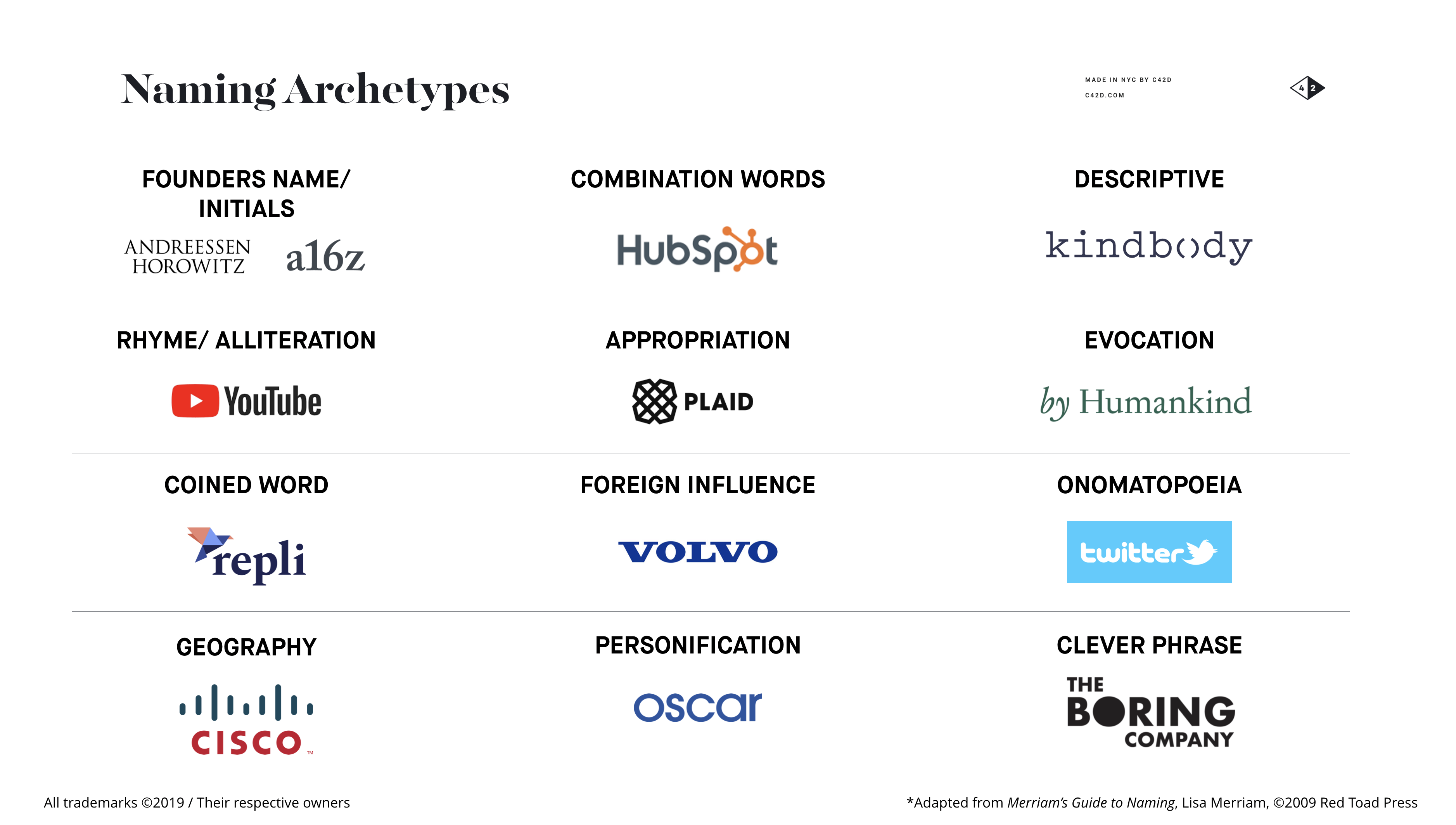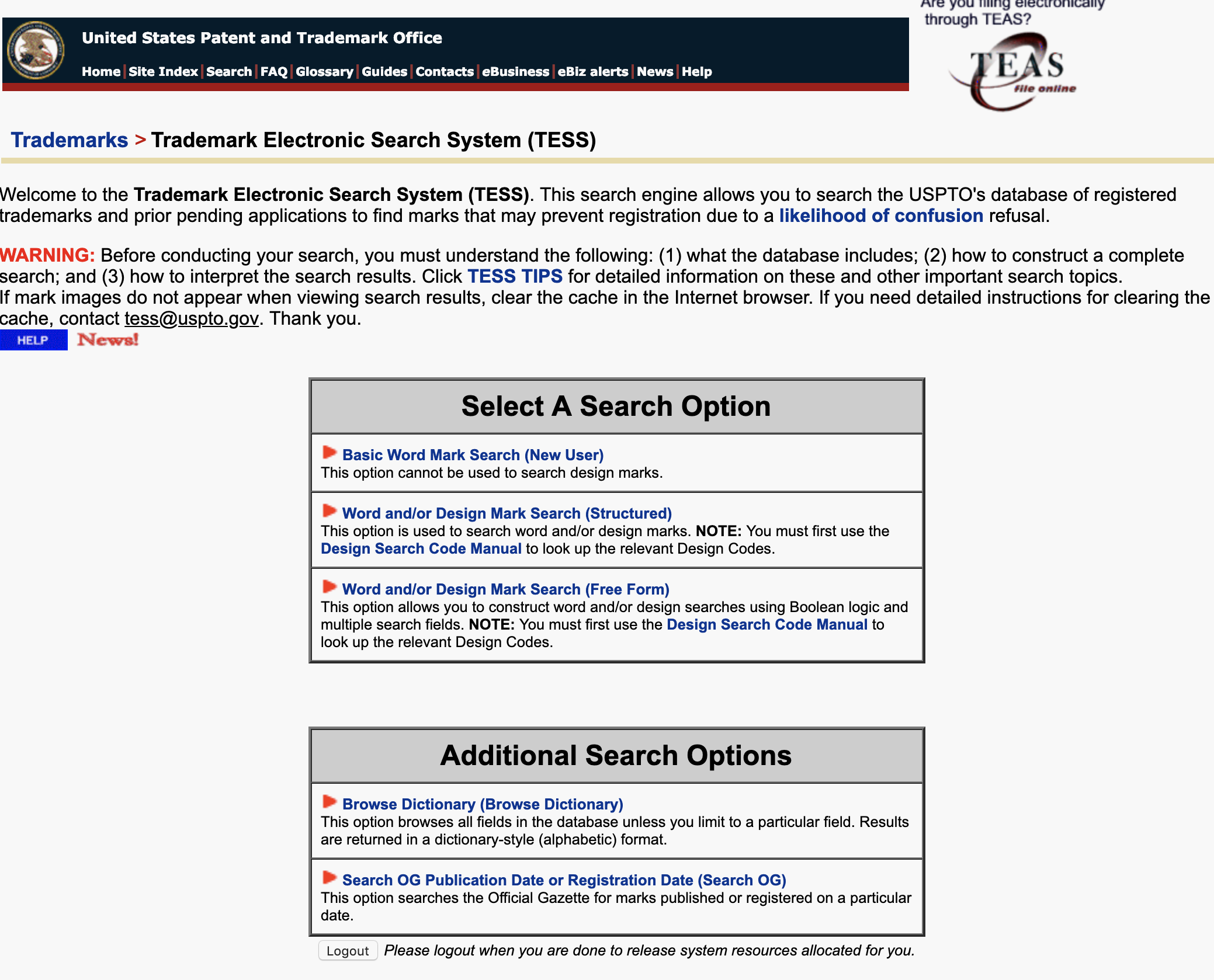The Six Steps to Creating the Perfect Brand Name

Here’s the deal—naming is hard. It’s not for the faint of heart. A bad name might not sink your company, but it could definitely make growth more difficult. A good name that’s unique, emotional and makes you stand out can inspire and act as a galvanizing force for your entire company. Sound good? Read on and learn our six-step process to creating a winning name.
There might not be a more daunting proposition than choosing a name for your brand.
You have the product. You have the target market. You’ve done the strategy work. You even know the colors you want to use, the tone of voice your marketing will employ. You’ve thought about the partnerships you’ll create down the line when you explode into the public consciousness.
But you have no freakin’ idea what to call your company. Or worse, you chose a name and don’t feel it’s up to par.
And it’s forever.*
*Ok, you can always re-brand, but that’s a whole ‘nother demon.
Don’t fret, we’ve got you covered. Together with brand naming expert Susan Manning, we’ve created a bulletproof six-step guide to naming your brand. But first, consider the various approaches you can take to create a killer name.
*Note: For more info, check out our webinar “How to Name Your Company”, where we dive into the specifics of each approach in the below.

Step 1: Don’t think of a name!
A good name is authentic. It represents what the company stands for and what it hopes to achieve. So before you start dreaming up names, your brand has to be fleshed out. That means defining your company’s values, the brand’s positioning, who your target audience is, and your overall business and branding strategy.
Why can’t you just think of a cool name and retrofit it to be relevant to your company or product?
“I always think of naming as strategic, creative problem-solving. I need to really understand everything about what this name stands for, who its audience is, what the competitive set is like. That’s the first level in the process. It’s just getting that grounding and understanding.”
Defining the key foundational characteristics of the brand and strategic objectives for the name provides strong grounding and understanding off which to create an authentic, meaningful and differentiated brand name, which ultimately adds business value.
Crucially, this process also helps bring all of the key stakeholders in the company together and ensures that everyone is on the same page before you start moving forward. If this important step is skipped, the entire process can be put in peril.
Create a brief that outlines all the project specifics. You want to analyze your competition – who else is in your vertical and what’s their positioning?
Go into your company history. Why was the company started? What mission are you on? What good are you trying to solve in the world? Do the founders have any unique qualities about them? Are they quirky? Are they left-handed? What are some of the associated words or imagery that come to mind when you think about the story behind your company or the history of the founders of the history of the company?
And then last but not least, your company strategy. How are you positioned? What’s your unique selling proposition? What are some of the words or qualities of your culture or that describe your company?
Try and avoid the cliché language. Here you really want to put down things that are ownable, unique, and specific to your company — and doesn’t sound like what everyone else is saying. These words are going to form the genesis for your brainstorming.

Step 2: Brainstorm a big, big BIG list
This is one of the fun parts, the time to start throwing ideas out there. Truly, it’s about throwing stuff on the wall and see what sticks. Invite all key stakeholders to participate; this is when you want as many ideas as possible. It doesn’t matter if they seem all over the place. In fact, that’s a good outcome.
It bears repeating that you want all the “key stakeholders” (read: your boss or partner who can approve or kill the final name) to participate. Make everyone part of the process or you risk a swoop-and-poop at the end.
We assume you are not a human dictionary, so to start generating words, employ online tools for word associations. For example, go to thesaurus.com and input some of those unique qualities about your company, founders, or product and you’ll get words that have similar meanings. Like a mind-mapping exercise, you can start exploring different ways to express the same idea, or you might notice two or more words that you can combine.
There are also other resources to research a word’s origin, foreign meaning, and more. Try combining words. Try inventing new words. Generate as many ideas as possible, and get everything together on one master list in a central location where everyone can see it and comment on it.
From there, you want to select the best of the bunch, but still maintain flexibility and a lot of options at this stage. Only discard names that seem totally off-brand or are a bad fit with the foundational aspects that were determined in Step 1.
Here’s some more online resources for word-smithing:
Step 3: Try on your first round of names
Don’t discount any of the potential names that graduated to this stage. Even though you still have a long-ish list, give every name the proper chance it deserves. How do you do this? It’s a bit like choosing to clothe—try it on, imagine it in different situations, and most importantly, see how it makes you feel.
“It’s when the rubber meets the road, When a client sees names, that’s when they really start to respond and think in more concrete ways about who they are and why a name fits them. Or why it doesn’t fit them.”
After you’ve done this, you’ll inevitably see that some names are stronger than others.

Step 4: Ditch some names and cull down to a shortlist
Your initial longer list will undoubtedly have some names on it that are barely hanging on. Cut them and create a shortlist to choose from. You only want to ruminate on the names that spark an emotional reaction in the brand.
“But Dave, what if I come up with a great idea that wasn’t on the original list?”
Great question—and that’s a good thing. This process isn’t meant to reward names that your group thought of early on. It’s not sprint or marathon—it’s not even a race. The point of the process is to spark creative thinking around your brand and what will best represent it and resonate with your customers and the market. So now’s a great time in the process to introduce new names and ideas that have come up.
“A lot of times new ideas come up or the client wants to explore a particular word or word part or idea more deeply,” Manning says. “So the second round is a deeper round. It’s more refined.”
How to evaluate and get good feedback
There are a few pitfalls or mistakes to watch out for as you evaluate. One is not evaluating against the brief that you wrote and the underlying strategy. Someone says.”I just don’t like it.”
This is the biggest mistake you can make.
Your company name has to do one thing: Get the right people to think the right things about your company. If it does that, you have a winner.
So how do you know if people are thinking the right things about your name? Do some research.
You, the founders, CMOs, and employees are not your ideal prospects. Get feedback from regular people who are outside the organization. This could be potential customers, this could be your friends or other people. Take some of the names that you think have potential, and put each one on a 3 x 5 card, show them around, and ask: “What pops into your head when you read this?” With enough people, you’re going to see a pattern emerge and see a clear winner after a while. Another approach is quantitative or qualitative testing, which can be more expensive but potentially more sound in the conclusion.
Try to avoid any kind of voting process. Don’t go for the name that everybody agrees on, but nobody is excited about. Find the one that is distinctive and stands out. Also, make sure your name is open and elastic enough to stretch with your brand as it grows. Your proposal-writing software might expand to a suite of new business tools and contract management in a few years.
“One of the big pitfalls is naming by committee. This is a terrible idea that usually leads to milk toast results. You want your name to stand for something and not be the least objectionable name that everyone was willing to agree upon.”

Step 5: Familiarize yourself with the USPTO and TESS
The worst-case scenario is you find the perfect name, build your website, and get a cease-and-desist letter because there’s another firm in your category with a similar name.
We’ve actually seen this happen and it’s not fun.
To avoid disaster, start familiarizing yourself with TESS, aka Trademark Electronic Search System, an online tool run by the U.S. Patent and Trademark Office where you can check the availability of your potential trademark. Thankfully, we’ve created an entire guide to navigating TESS and the legal side of trademarks, so we can save space on this article!

Step 6: Finalize a shortlist, summon the courage and decide
We know how difficult and stressful choosing a name is. It’s a crucial part of your brand. But of all the steps, this is the one that we encourage the most to take your time with.
“It’s very important to spend time with the names after they’re presented,” Susan Manning says. “I encourage my clients to always spend a few days going up and down the list of the names, all of them, and to really think about what names really resonate. What ones do they remember?”
Most often it’s not love at first sight, so give it time.
When you consider each name, it’s important to go as deep as you possibly can. Even sketching out some low-fi visuals with possible names can help, as visualization can make it feel “real”. Your gut response in those moments can tell you a lot about how a name will be received and what emotional response it will engender.
“You have to imagine your brand through the name,” Manning says. “That takes time and thought and care and, I think, courage too.”
Conclusion
Think about the brand names that you like. Why do you like them? The answer will be different for everyone. Maybe you like names that are cool, names that play around with words, names that are short, names that are long, names that combine two seemingly different words.
Whatever it is, you probably like a brand name because of two main reasons. First, the name makes you feel something. And second, the name is likely one for a successful brand. Because what represents brand success is creating an emotional connection with the consumer. You want your name to do that too, and you can ensure that happens as long as you find a name that is built on a strong brand foundation and strategy.
At the end of the day, you want a name that you and your customers will live with for a very long time. And that takes courage.
“You have to ultimately feel that you can be this name. That it works enough in your comfort zone, or that you’re willing to stretch your comfort zone.”
Special thanks to Merriam’s Guide to Naming By Lisa D. Merriam
(Available on Amazon.com)
If this article helped you, please help us by sharing it or recommending it to a friend. Thank you!


